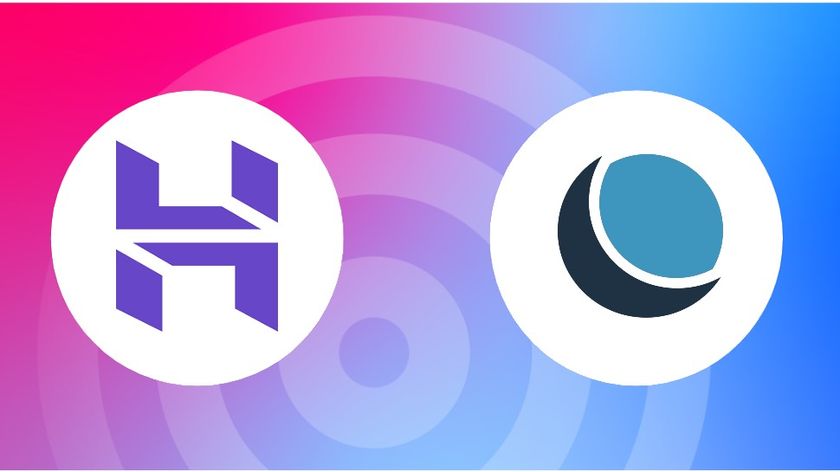Why the personal cloud will define next-gen computing
Should IT departments ban or embrace shadow IT?
What opportunities does the personal cloud bring?
"For people who want to start or are running a business it is incredibly empowering," says Tom Povey, Director, MyFuturecloud, who thinks it can put small businesses on a level playing field with big competition. "The highly efficient internal communication systems that were once the preserve of big corporations are now open to anyone, as is the ability to work and operate from anywhere in the world – you no longer need physical infrastructure across the globe to be an international presence."
It might be popular, but the personal cloud isn't finished yet. "There's a need for better interconnect between different cloud providers for the best possible user experience on all platforms," says Warren.
One example is the latest update Dropbox has made to its iOS app, which allows content in a variety of apps to be saved directly to Dropbox. It's a small change but completes the circle by doing away with the need to email yourself a photo – from a work point of view, that's a hugely productive change.
What will happen next with the personal cloud?
Some think that IT departments need to claw back network sovereignty and take a hard line against personal cloud apps. "As cybersecurity concerns mount, IT departments need to prioritise network protection rather than trying to embrace personal cloud services used by employees," says Lubor Ptacek, VP Product Marketing at OpenText. "What enterprises need are cloud-based services that have been designed and built specifically for business."

There's good reasoning behind this hard line since both the EU's Data Protection Directive and UK's Data Protection regulation mean that businesses are accountable for governing the transfer of personally identifiable information across Europe. "Organisations need clear visibility of data," says Ptacek, "and this is something personal cloud providers can't bring to the table."
A more inclusive approach is the adoption of the hybrid cloud. The vast majority of cloud users (84% according to Trustmarque) say they haven't got or don't know if there is a cloud usage policy in their workplace. That apathy and disregard for IT diktats is only going to get worse.
Perhaps there is only one choice for IT departments. "The personal cloud will have more of a role in enterprise computing as hybrid cloud architectures become the norm," says di Ventura. "Hybrid cloud will let organisations empower their users and keep them happy, while at the same time ensuring risk is minimised by using the right cloud for each workload."
Are you a pro? Subscribe to our newsletter
Sign up to the TechRadar Pro newsletter to get all the top news, opinion, features and guidance your business needs to succeed!
One way of IT departments wresting back some control of the personal cloud is to design their own personal cloud apps. "The personal cloud will continue to evolve towards professional uses, and it's likely that as in-house expertise and skills develop we will see more and more services coming from the enterprise IT departments themselves as opposed to apps sourced from the public app stores," says Tebbutt.
What kind of business models are we seeing emerge built on the personal cloud?
The consumerisation of IT that has been fostered by free cloud storage services is creating new ways of doing things. "Because they can no longer say 'no, you can't use XYZ service for company activities', IT managers are faced with a choice – let their users roam free or deploy equally approachable solutions that enable them to also control how data is created, used, and shared," says Jeff Denworth, SVP Marketing at CTERA.

"The result is the proliferation of a new class of IT toolsets, IT controls and management capabilities coupled with an ease of use that simplifies the everyday work experience – all being democratised by a new class of IT-as-a-service platform providers." Denworth also predicts that new biometric approaches to data protection and authentication will also flourish.
What could the personal cloud look like in 10 years?
The personal cloud and shadow IT aren't likely to disappear, but the boundaries between them probably will. "In 10 years, there will be no distinction between the 'personal' and 'business' cloud," says Rege, who thinks that we're likely to see a holistic approach to the cloud in the workplace. "Security will exist at the file-level and employees will be able to use whichever productivity solution helps them do their jobs better."
As well as free choice of apps and storage, and biometrically-locked files, the personal cloud is likely to link to new devices. Think wearables linked to business apps in the cloud, and smart homes controlled from afar with unlimited and low cost computing power that "evolves every aspect of the IT experience from reactive and productive to predictive, preventative and proactive," according to Denworth.
Such is the popularity of personal cloud apps, that whatever it lacks, the personal cloud will probably overcome in time. Warren thinks that the personal cloud is already on a mission to become enterprise-grade.
"Personal cloud companies are acutely aware that the existing model is not fit-for-purpose in an enterprise environment," he says. "We will begin to see personal cloud providers working more closely with enterprise-class cloud, infrastructure and security providers. Combining an intuitive interface with enterprise-grade resiliency and security is a compelling business proposition for companies of all sizes."
Jamie is a freelance tech, travel and space journalist based in the UK. He’s been writing regularly for Techradar since it was launched in 2008 and also writes regularly for Forbes, The Telegraph, the South China Morning Post, Sky & Telescope and the Sky At Night magazine as well as other Future titles T3, Digital Camera World, All About Space and Space.com. He also edits two of his own websites, TravGear.com and WhenIsTheNextEclipse.com that reflect his obsession with travel gear and solar eclipse travel. He is the author of A Stargazing Program For Beginners (Springer, 2015),











